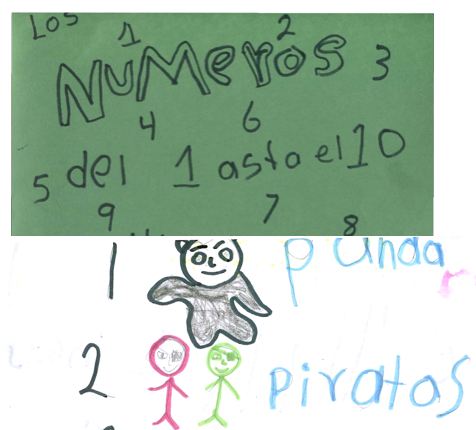Count on Counting Books to Tell You A Lot About Your Students
One of the greatest joys of being a kindergarten teacher is witnessing the growth that occurs over the course of a year right in front of your eyes. Sometimes that growth seems to occur over night; watching them struggle with a concept one day and then “getting it” the next. How does a classroom teacher document all that growth? How can you demonstrate to parents, administration and most importantly to students, how far they have come over the course of the year? The task can seem overwhelming. The trick is to embed the documentation into the task at hand so that the line where instruction ends and assessment begins is so blurred, that really, the two meld into one another.
Kindergarteners count. All the time. Knowing that counting is an important component of the math diet, I wanted to give my students various opportunities to practice counting. In addition, I wanted a way to show counting growth with my students, but not just through a teacher-created checklist of who could or could not orally count, count objects, etc. I wanted something that would show how they had grown as mathematicians.
After debriefing with some colleagues, I decided to have my students make counting books. They could make books at the beginning and end of the year, and through this task, we would see evidence of their mathematical growth.
My class read and read and reread counting books for days. We studied the books to find common characteristics.


1, 2, 3 to the Zoo by Eric Carle & One Duck Stuck by Phyllis Root
My students noticed that all counting books had a number or numbers on each page along with a picture that somehow represented the value of that number. We noticed that many of the books used number words in addition to the numeral.


The Cheerios Counting Book by Barbara McGrath & One is a Snail, Ten is a Crab: A Counting by Feet Book by April Sayre
To help keep track of our findings, we made an anchor chart that students could refer to later.
Then, the students created their own counting books. I supplied them with pre-made books of several blank pages stapled together. Using blank pages (rather than a template) was important to my growth model because I wanted to see how the students chose to use the page.
Some students created very basic counting books that went from 1 – 10, where each page contained the number and a picture that represented that number. Other students created thematic counting books, counting books that skip counted, and counting books that counted backwards.

Fast forward to the end of the year: My class revisited our counting books collection from the beginning of the year. The students were asked again to create counting books. I was ready to see their counting growth demonstrated in the books. But the growth I saw was not limited to their number sense. I saw growth in their writing, fine motor skills, story structure understanding, drawings, and concept of print.
One of my favorite books had a page in the back with a drawing of a little girl and a blurb about her. When I asked the student about the page, she replied, “That’s my author’s page. You always read us the author’s page when you read us books and I like hearing about the authors.”
The students loved looking back at their books from the beginning of the year and laughing at themselves and how little they seemed to know back then. They were proud of their accomplishments.
The books gave me great insight into my students. At the beginning of the year I found out who could count, who could write numerals, and who understood the structure of a counting book. This allowed me to set instructional goals in multiple areas for each of my students. At the end of the year, I was able to show growth in different areas of their development.
An added benefit: Students saw a link between literacy and math. They understood that mathematicians write and some mathematicians are authors. The connection was made. And that is what counts.
P.S. Our favorite counting book turned out to be Count the Monkeys by Mac Barnett. See him reading his book here.
Looking for counting books to use as read alouds and mentor texts! Check out our Counting Books List for counting book mentor texts.
